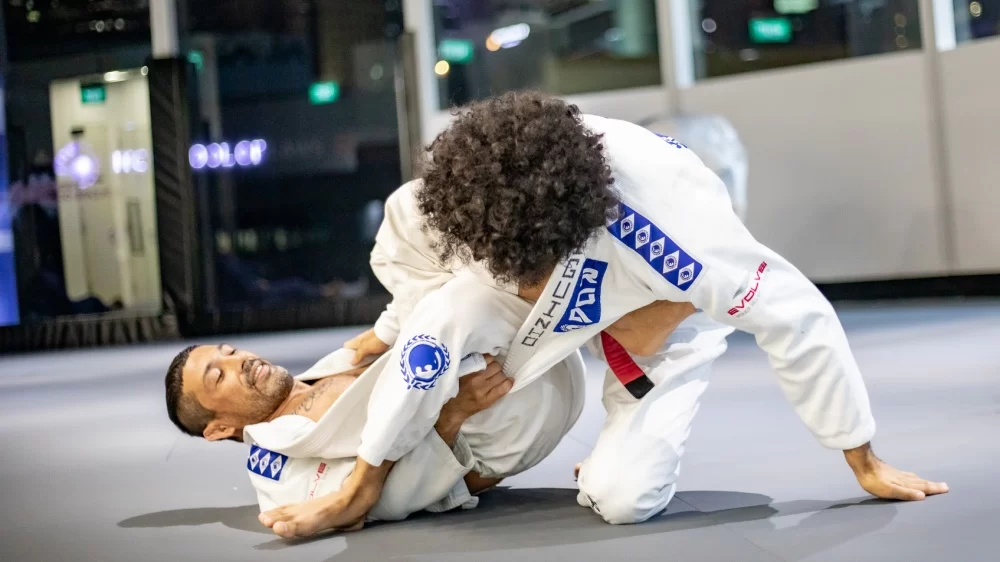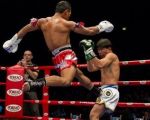MMA Guard Passing Techniques: Mastering Effective Guard Passing for Fighters
- 1. Understanding Guard Passing in MMA
- 2. Key Principles of Effective Guard Passing
- 3. Top Guard Passing Techniques for MMA Fighters
- 4. Common Mistakes to Avoid While Passing Guard
- 5. Real-Life Examples and Success Stories in MMA Guard Passing
1. Understanding Guard Passing in MMA
In MMA, guard passing refers to the process of advancing from an opponent's guard to a more dominant position, typically side control or mount. The guard is a position where one fighter is on their back, using their legs to control or attempt submissions on the top fighter. It’s a crucial skill for any MMA fighter, as successfully passing the guard allows for ground and pound, submissions, or improving the overall control of the fight.
Effective guard passing can make the difference between securing a dominant position and getting caught in a submission or swept. It requires a combination of timing, technique, and strategy—skills that can be honed over time through practice and experience in Brazilian Jiu-Jitsu (BJJ) and MMA training.
2. Key Principles of Effective Guard Passing
To master MMA guard passing, understanding the key principles is vital. Here are some of the most important concepts:
- Posture and Base: Maintaining good posture is crucial when passing guard. If your posture breaks down, you become vulnerable to sweeps or submissions. Keep your back straight, hips low, and maintain a strong base to prevent your opponent from controlling your movement.
- Pressure and Control: Applying pressure while maintaining control is essential. Passes that involve pressure, like the knee slice or over-under pass, use the weight of your body to keep the opponent on the defensive.
- Timing and Angles: Guard passing is about creating the right timing and angles. You want to move in a way that disrupts your opponent’s guard and opens up passing opportunities, using angles that reduce their ability to recover the guard.
These principles help MMA fighters to stay one step ahead when dealing with a dangerous guard player, preventing their opponent from threatening with submissions or sweeps.
3. Top Guard Passing Techniques for MMA Fighters
There are several guard passing techniques that are effective in MMA, combining the principles of BJJ with the demands of striking and cage control. Here are some of the top guard passing techniques:
- Over-Under Pass: The over-under pass is one of the most reliable guard passes in MMA. By controlling your opponent’s legs and body, you create a powerful angle to move into side control. This pass also keeps you low and ready to engage with strikes, making it ideal in the cage.
- Knee Slice Pass: The knee slice pass involves driving your knee across your opponent’s body while controlling their hips. This pass is effective for breaking open a closed guard and transitioning to side control or mount.
- Stack Pass: The stack pass is another high-pressure technique. You stack your opponent’s legs over their head while controlling their hips, forcing them to give up the guard as you move forward. This pass is particularly effective when your opponent is trying to recover guard.
- Double Under Pass: The double under pass involves getting both arms under your opponent’s legs while maintaining posture and control. From this position, you can clear the legs and move into side control or even mount.
These techniques are staples in the MMA guard passing arsenal, and each one has its strengths depending on the situation and the type of guard you are dealing with.
4. Common Mistakes to Avoid While Passing Guard
Even experienced fighters make mistakes while attempting to pass guard. Here are some of the most common errors to avoid:
- Not Keeping Proper Posture: A common mistake is slumping over or getting too close to your opponent’s legs. This opens up the possibility of sweeps or submissions like the triangle choke.
- Forgetting to Control the Hips: If you neglect to control your opponent’s hips, they can easily recover their guard or even sweep you. Always keep the pressure on their hips to prevent movement.
- Rushing the Pass: Guard passing requires patience and control. Rushing the pass can result in sloppy positioning, which leaves you vulnerable to sweeps and submissions.
Avoiding these mistakes ensures that your guard passing remains efficient and effective, allowing you to maintain control and dictate the pace of the fight.
5. Real-Life Examples and Success Stories in MMA Guard Passing
Many MMA champions and top-level competitors have relied on mastering guard passing to gain an advantage in the cage. Take, for example, UFC fighter Khabib Nurmagomedov, known for his dominant top game and relentless guard passing. Khabib has utilized the over-under pass and knee slice pass with precision, overwhelming opponents with pressure and control.
Another great example is Brazilian Jiu-Jitsu legend Roger Gracie, who brought his world-class guard passing skills to MMA. Roger’s technique in passing guard, especially with the double under pass, allowed him to neutralize opponents on the ground and control the fight, even against elite competition.
These success stories highlight the importance of mastering guard passing techniques in MMA. By incorporating effective guard passing into your game, you can achieve dominance on the ground, wear out your opponent, and set up opportunities for submissions or strikes.


































